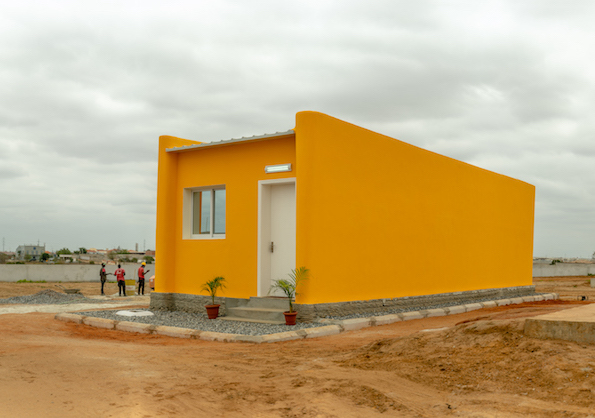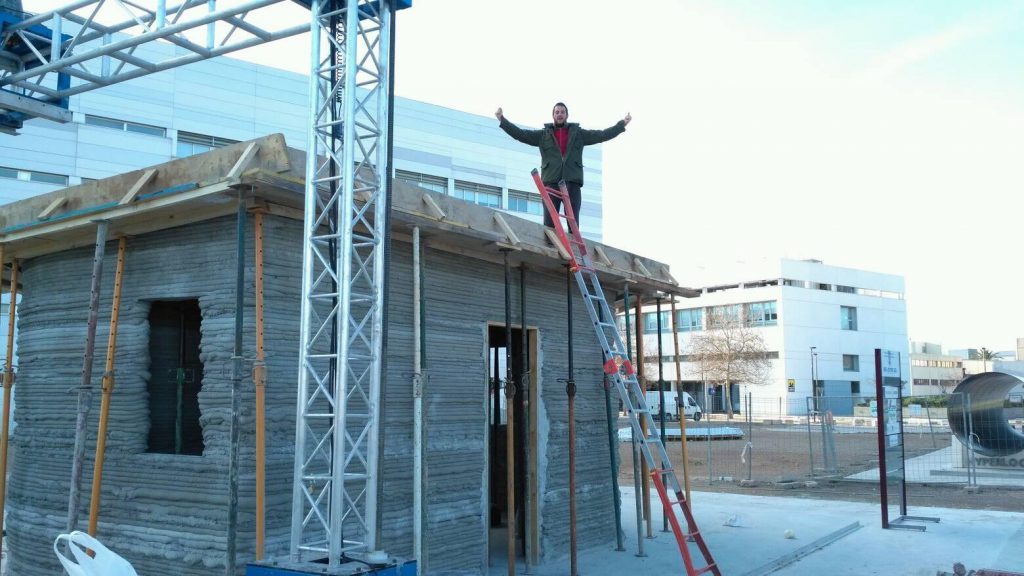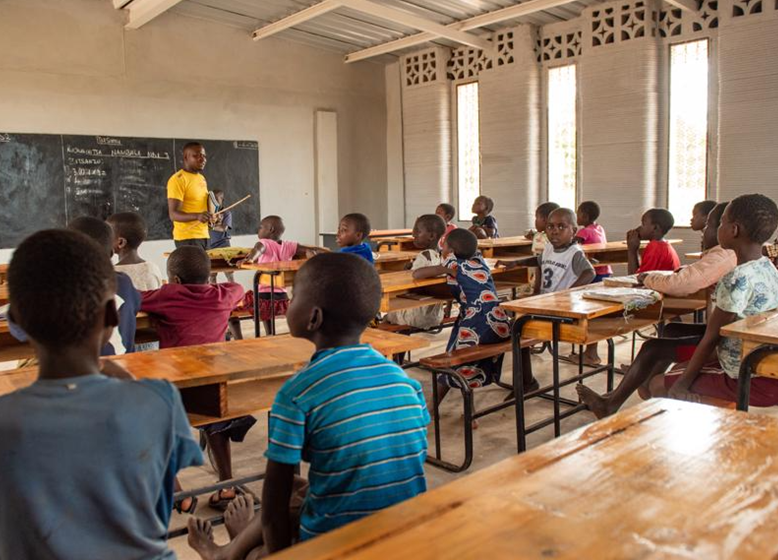Mexican building material supplier CEMEX has developed a means of turning regular concrete into a more versatile aggregate, and deployed it to 3D print a low-cost home on the African continent.
Formulated alongside 3D printer manufacturer COBOD, this D.fab admixture-boosted blend is said to “gain shape instantaneously,” lending it significant construction lead time and cost-minimizing potential. Already, the companies have put their concrete to the test, working with contractor Power2Build to build Angola’s first 3D printed home, and they say it could now have much broader applications.
“To address the world´s affordable housing needs requires not only a technology that can build faster, but also materials that are as cost-effective as ordinary concrete,” said Ricardo Almeida, CEO of Power2Build. “With this solution, the strength and quality of concrete combined with the speed and automation of 3D printing, we can help solve the affordable housing crisis in Angola and elsewhere.”

CEMEX and COBOD collaborate
Since it was founded in 1906, CEMEX has grown from a local firm into a multinational construction material and service provider, with a global revenue of $15 billion. While the company specializes in developing ready-mixed concrete, cement and aggregates, it also offers to install asphalt, as well as manufacture concrete block pavings, rail products and bespoke precast blocks for customers.
In the past, the firm has leveraged its construction material expertise to help Technical University of Valencia spin-out Be More 3D build a 3D printed bungalow at its Spanish campus. Reportedly only taking 12 hours to erect, the structure was constructed from cement that was enhanced by CEMEX-supplied additives.
Yet, despite the project’s success, it was largely a proof-of-concept initiative and a 3D printing test-case for CEMEX’s materials, thus to help scale the application of the technology, it has now partnered with the significantly more experienced COBOD.
“COBOD began 3D construction printing back in 2017, and we made the concrete recipe ourselves,” explains COBOD Founder Henrik Lund-Nielsen. “We had to use much cement to get the material to work, with the consequence that our recipe was not as efficient as we aspired. However, we continued to look for a solution with ordinary concrete, which is critical for the mass application of our technology.”
“We are more than pleased that CEMEX took on the challenge and proud that we cooperated to develop the new solution.”

Making concrete 3D printable
At present, many construction 3D printing firms use proprietary concrete blends to build structures in a layer-by-layer workflow, that will no doubt be familiar to those working in the 3D printing industry. Early market leader ICON, for instance, has developed a ‘Lavacrete’ material for use with its large-format Vulcan machine, while Mighty Buildings has come up with its own stone-like building minerals.
These firms have effectively been forced to formulate their materials due to the flowability issues presented when using ordinary concrete, but developing their own mixtures has also allowed them to do away with the throwaway molds and framework used during conventional construction, thus enhancing the cost-saving potential of their technologies.
However, with their new material, COBOD and CEMEX say they’ve now overcome the roadblocks preventing the 3D printing of everyday concrete. Specifically, by adding its proprietary D.fab family admixtures to ready-mix concrete, CEMEX has come up with a means of making it more fluid and malleable, in a way that allows it to be tailored, and facilitates its deposition during 3D printing.
In doing so, the company says it has devised a method of allowing local, readily-available materials to be used within construction, that could enable new, more affordable structures to be built around the world. Putting this idea to the test, CEMEX and COBOD have used the material for the first time alongside homebuilder Power2Build, to erect a unique fully-3D printed house in Angola’s capital, Luanda.
According to Power2Build, “the speed of execution and excellent construction quality” of the build make it a “true revolution” in the technology’s usage, while its cement compatibility allows Angolans to “look at the housing market with optimism.”
“Working together with COBOD, we have developed an experience for customers that is superior to anything that has been provided in the past,” explained Juan Romero, CEMEX’s Executive VP of Sustainability, Commercial and Operations Development. “Our innovation efforts position us at the forefront of new technologies that contribute to building a better future.”
“The introduction of this revolutionary 3D printing system is a testament to our customer-centric mindset and relentless focus on continuous innovation and improvement.”

COBOD’s construction credentials
Although concrete 3D printing remains at a relatively early stage of development, COBOD has already demonstrated the technology’s cost-saving potential on multiple fronts. Just last month, it was revealed that the company’s machinery had been deployed by Alquist3D, the PERI Group and Printed Farms Florida to build three new affordable US homes.
COBOD’s BOD 2 system has also been used in Africa before, with the aim of helping tackle Malawi’s chronic classroom shortage, by 3D printing an entire school there. Built as part of a project with 14Trees, the 56 sq. meter structure was erected inside of 18 hours, in a process that was said to yield 70% material savings as well as substantial cost reductions.
Dwellings aside, COBOD’s technology is set to be deployed in the creation of extremely tall skyscraping structures as well, such as GE Renewable Energy’s record-setting wind turbine towers. Expected to be built from LafargeHolcim’s proprietary materials, the 200 meter-tall tower is being designed to boost global renewable energy production while lowering the levelized cost of energy.
To stay up to date with the latest 3D printing news, don’t forget to subscribe to the 3D Printing Industry newsletter or follow us on Twitter or liking our page on Facebook.
For a deeper dive into additive manufacturing, you can now subscribe to our Youtube channel, featuring discussion, debriefs, and shots of 3D printing in-action.
Are you looking for a job in the additive manufacturing industry? Visit 3D Printing Jobs for a selection of roles in the industry.
Featured image shows COBOD and CEMEX’s 3D printed house in Angola. Image via BimPlus.



